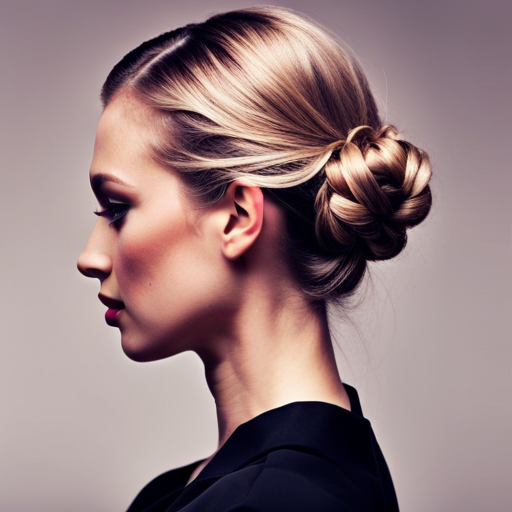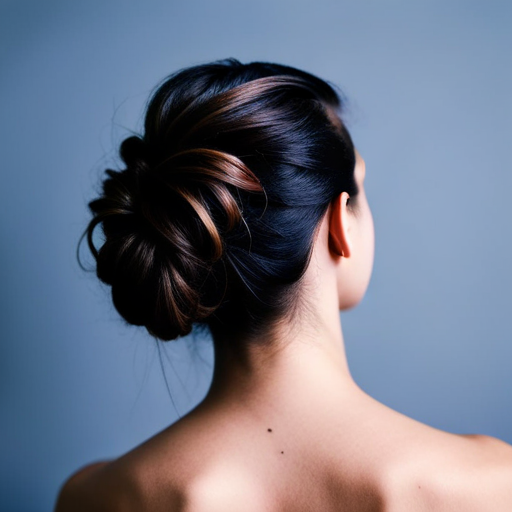Coping With Hair Fatigue After Extensive Styling

Struggling with hair fatigue after frequent heat styling and chemical treatments? It’s a common issue faced by many individuals.
In this article, we’ll delve into the causes and effects of hair fatigue, as well as practical tips to revitalize and restore your tired tresses.
From minimizing breakage to embracing low-maintenance styles, we’ll explore effective strategies to cope with the aftermath of extensive styling and rejuvenate your hair’s natural shine.
Understanding Hair Fatigue
The understanding of hair fatigue is crucial for those who frequently undergo extensive styling, as it can impact the overall health and appearance of the hair. Preventing fatigue is a key concern, and professional treatments play a significant role in maintaining hair health.
Hair fatigue occurs when the hair is overworked, leading to dryness, breakage, and dullness. Professional treatments such as deep conditioning, protein treatments, and scalp massages can help prevent and alleviate hair fatigue.
Deep conditioning treatments provide intense hydration, replenishing moisture and restoring the hair’s elasticity. Protein treatments strengthen the hair, reducing the risk of breakage and brittleness. Scalp massages improve blood circulation, promoting a healthier environment for hair growth. These professional treatments are essential in combating the effects of extensive styling and preventing hair fatigue.
Understanding the importance of preventing hair fatigue through professional treatments sets the stage for the subsequent section, which focuses on identifying signs of hair fatigue. By recognizing the warning signs of hair fatigue, individuals can take proactive steps to address and mitigate its effects, ultimately maintaining the health and vitality of their hair.
Identifying Signs of Hair Fatigue
Hair fatigue can manifest in various ways, making it essential to identify the signs early on. Split ends and breakage are common indicators of hair fatigue, often resulting from excessive heat styling or chemical treatments.
Additionally, a loss of shine and lack of elasticity are also key symptoms to look out for, as they can hint at the overall health and condition of the hair.
Split Ends and Breakage
Identifying split ends and breakage is crucial for recognizing signs of hair fatigue.
Preventing split ends: Regular trims every 6-8 weeks can help prevent split ends from traveling up the hair shaft.
Repairing breakage: Deep conditioning treatments and protein-based products can help repair hair breakage and strengthen the hair shaft.
Hair fatigue: causes, solutions: Over-styling, excessive heat, and chemical damage can lead to hair fatigue. To combat this, it’s important to give the hair regular breaks from styling, use heat protectants, and opt for gentle hair care products.
Loss of Shine
Loss of shine is a common indication of hair fatigue, often caused by excessive styling and exposure to damaging factors such as heat and chemicals. When hair loses its luster, it can appear dull and lackluster, signaling the need for restorative measures.
To restore luster, adjustments to the hair care routine are essential. This includes using nourishing hair masks or oils to replenish moisture and improve the overall shine. Additionally, reducing the frequency of heat styling and incorporating protective products can help prevent further damage and enhance the hair’s natural radiance.
It’s also important to consider the impact of diet and hydration on hair health, as proper nutrition and adequate water intake play a significant role in maintaining shine and overall hair vitality.
Lack of Elasticity
One common indication of hair fatigue is a noticeable decrease in the hair’s elasticity, often resulting from excessive styling and exposure to damaging factors such as heat and chemicals. This lack of elasticity can make the hair more prone to breakage and damage.
To address this issue, it’s important to take proactive steps to restore the hair’s elasticity and prevent further damage. Here are three key strategies to consider:
-
Deep conditioning treatments: Regular deep conditioning treatments can help replenish moisture and improve the elasticity of the hair.
-
Gentle detangling: Using a wide-tooth comb or a detangling brush can help prevent unnecessary stress on the hair, minimizing the risk of breakage.
-
Heat protection products: When heat styling is unavoidable, using heat protection products can help minimize damage and preserve the hair’s elasticity.
Damage Control: Minimizing Breakage
In order to minimize breakage and combat hair fatigue, it is essential to focus on:
- Strengthening the hair strands
- Moisturizing and nourishing the hair
- Implementing protective styling techniques
These three key points aim to enhance the overall health and resilience of the hair, thereby reducing the risk of breakage and damage.
Strengthening Hair Strands
To fortify hair strands and minimize breakage, it is crucial to incorporate a strengthening treatment into your hair care routine. Here are three essential steps to strengthen your hair and minimize breakage:
-
Protein Treatments: Look for hair masks or treatments containing keratin, collagen, or other protein-based ingredients to repair and strengthen damaged hair strands.
-
Regular Trimming: Schedule regular trims every 6-8 weeks to eliminate split ends and prevent hair breakage from traveling up the hair shaft.
-
Gentle Handling: Minimize the use of heat styling tools, opt for seamless hair accessories, and avoid aggressive brushing to reduce mechanical damage to the hair.
Moisturizing and Nourishing
Transitioning from strengthening treatments, it is essential to focus on moisturizing and nourishing the hair to minimize breakage and maintain overall hair health.
Deep conditioning and hair masks are vital for providing intense moisture and nourishment to the hair. Deep conditioning treatments penetrate the hair shaft, restoring moisture and improving elasticity, thereby reducing the risk of breakage.
Hair masks, enriched with natural oils and nutrients, help in replenishing and revitalizing the hair, promoting strength and minimizing damage.
In addition, scalp massage and hot oil treatments stimulate blood flow to the scalp, nourishing the hair follicles and promoting healthy hair growth. Scalp massage helps distribute natural oils, while hot oil treatments provide deep conditioning and nourishment, both contributing to minimizing breakage and maintaining healthy, lustrous hair.
Protective Styling Techniques
After extensive styling, it is important to employ protective styling techniques to minimize breakage and maintain the health of the hair. Here are some tips to help prevent hair fatigue and promote healthy hair care maintenance:
-
Low Manipulation Styles: Opt for protective styles such as braids, twists, buns, or updos to minimize the need for daily styling and reduce tension on the hair strands.
-
Use of Hair Accessories: Incorporate silk scarves, hair bonnets, or satin pillowcases to reduce friction and breakage while sleeping.
-
Moisture Retention: Keep the hair hydrated and moisturized by using leave-in conditioners, oils, and regular deep conditioning treatments to prevent dryness and breakage.
Nourishing Your Tired Tresses
Rejuvenation is essential for tired tresses after extensive styling to restore their health and vitality. Deep conditioning treatments and nourishing hair masks are crucial for replenishing the moisture and nutrients that may have been depleted during the styling process.
Deep conditioning involves applying a rich, hydrating treatment to the hair and allowing it to penetrate deeply, restoring moisture and improving the overall condition of the hair. Look for deep conditioning products that contain ingredients such as argan oil, shea butter, and keratin to provide intense nourishment and repair.
In addition to deep conditioning, incorporating hair masks into your hair care routine can provide an extra boost of nourishment. Hair masks are formulated with concentrated ingredients that target specific concerns such as damage, dryness, or frizz. Using a hair mask once or twice a week can help revitalize tired tresses, leaving them feeling soft, smooth, and rejuvenated.
Reviving Your Hair’s Natural Shine
To revive your hair’s natural shine, proper care and targeted treatments can help restore luster and vibrancy to tired tresses. Here are three effective ways to bring back the natural shine to your hair:
-
DIY Hair Masks: Create nourishing hair masks using natural ingredients such as avocado, coconut oil, or honey. These DIY treatments can help replenish moisture and nutrients, promoting a healthier shine.
-
Natural Hair Remedies: Explore natural remedies like rinsing your hair with apple cider vinegar or using aloe vera gel to add shine and smoothness to your strands. These remedies can help remove product buildup and restore your hair’s natural radiance.
-
Proper Hair Care Routine: Implement a proper hair care routine that includes gentle shampooing, conditioning, and regular trims to eliminate dry, damaged ends and promote a glossy finish.
Embracing Low-Maintenance Styles
Transitioning from extensive styling to embracing low-maintenance styles requires a shift in focus towards simplicity and ease, allowing your hair to recover and thrive with less manipulation. Embracing low-maintenance styles can not only give your hair a break but also help in maintaining its health and natural texture. Here are some hair care and styling tips to help you embrace low-maintenance styles effortlessly:
| Hair Care Tips | Styling Tips | Low-Maintenance Styles |
|---|---|---|
| 1. Use hydrating shampoos and conditioners to keep your hair nourished. | 1. Opt for air-drying instead of using heat styling tools. | 1. Sleek low ponytails or buns are quick and easy styles. |
| 2. Incorporate regular deep conditioning treatments to keep your hair strong and moisturized. | 2. Embrace your natural texture and use minimal products for a laid-back look. | 2. Effortless beach waves can be achieved by braiding damp hair and letting it dry naturally. |
| 3. Protect your hair from environmental damage by wearing a hat or scarf when outdoors. | 3. Experiment with simple hair accessories like headbands or clips for a touch of style. | 3. Embrace the beauty of natural curls and opt for wash-and-go hairstyles. |
Adopting a Healthy Haircare Routine
The adoption of a healthy haircare routine is essential for restoring and maintaining the vitality of your hair after extensive styling. To ensure that your hair remains healthy and vibrant, consider incorporating the following practices into your daily routine:
-
Gentle Cleansing:
- Use a mild shampoo and conditioner that are suitable for your hair type.
- Avoid overwashing, as it can strip the hair of its natural oils, leading to dryness and damage.
-
Regular Trimming:
- Schedule regular trims every 6-8 weeks to get rid of split ends and prevent breakage.
- This practice promotes healthy hair growth and maintains the overall health of your hair.
-
Protective Styling:
- Embrace hairstyles that minimize stress on your hair, such as braids, buns, or ponytails.
- Use accessories like silk scrunchies or satin hair wraps to reduce friction and breakage.
By incorporating these hair care practices into your routine, you can effectively prevent damage and promote the overall health and vitality of your hair.
Remember that consistency is key when it comes to maintaining a healthy haircare routine.
Seeking Professional Advice
Professional consultation is advisable for addressing hair fatigue after extensive styling. When seeking professional advice for hair fatigue, it is essential to consider consulting with a trichologist or a hair restoration specialist. These professionals are equipped with the knowledge and expertise to assess the extent of hair fatigue and recommend suitable treatment options.
During the consultation, the specialist will conduct a thorough examination of the scalp and hair to identify any underlying issues contributing to the fatigue. Additionally, they can provide personalized recommendations for hair restoration treatments tailored to the individual’s specific needs.
Furthermore, professional consultation offers the opportunity to receive guidance on adjusting styling practices and selecting appropriate hair care products to promote overall hair health.
By seeking professional advice, individuals can gain valuable insights into managing and revitalizing fatigued hair, ultimately working towards restoring its strength and vitality.
Therefore, it is highly beneficial to prioritize professional consultation as part of the process of addressing hair fatigue after extensive styling.
Frequently Asked Questions
Can Hair Fatigue Be Reversed or Is It Permanent Damage?
Hair fatigue can be reversed with proper care. Consistent use of damage prevention techniques, gentle styling methods, and a focus on hair health can help repair and rejuvenate tired hair. Professional hair care routines are essential.
Are There Any Specific Vitamins or Supplements That Can Help Combat Hair Fatigue?
Studies show that dietary supplements like biotin and collagen can aid in combating hair fatigue. Natural remedies such as omega-3 fatty acids and vitamin E also contribute to improved hair health. These supplements support overall hair strength and vitality.
How Often Should I Trim My Hair to Reduce the Effects of Hair Fatigue?
Trim frequency is an essential component of a healthy haircare routine. Regular trims, typically every 6-8 weeks, can help prevent split ends and breakage, reducing the effects of hair fatigue and promoting overall hair health.
Are There Any Specific Hair Products or Treatments That Can Help Revive Tired, Over-Styled Hair?
To revive tired, over-styled hair, various hair products and treatments can be utilized, such as hair masks, deep conditioning, scalp massage, hair oils, serums, protein treatments, heat protectants, leave-in conditioners, and targeted hair repair for rejuvenation.
What Are Some Easy, Quick Hairstyles I Can Try to Give My Hair a Break From Extensive Styling?
For those seeking easy, low maintenance hairstyles, incorporating protective haircare routines can be beneficial. Quick styles such as loose braids, messy buns, or sleek ponytails can provide a break from extensive styling, promoting hair health.
Conclusion
In conclusion, it is important to recognize and address hair fatigue in order to maintain healthy and vibrant tresses.
Just as a garden needs regular care and nourishment to thrive, our hair also requires attention and nourishment to avoid damage and breakage.
By identifying signs of fatigue, adopting a healthy haircare routine, and seeking professional advice when needed, we can revive our tired tresses and embrace low-maintenance styles with a renewed sense of vitality.





